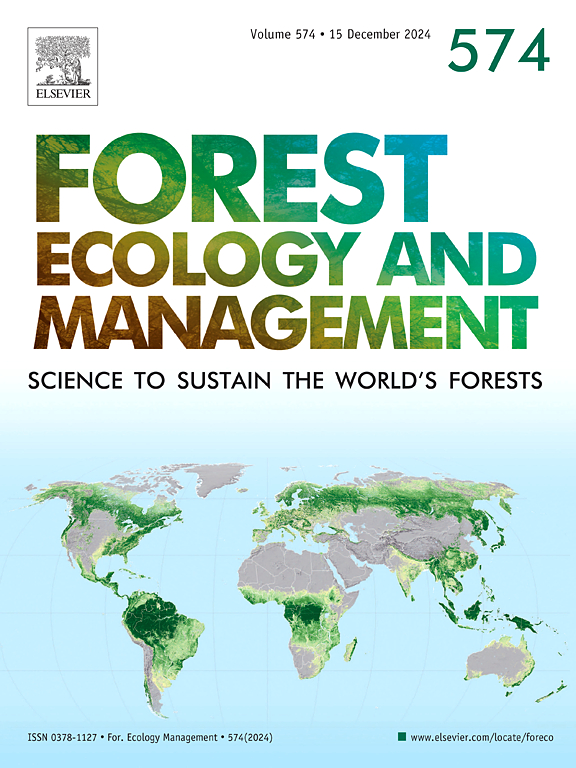Edge effect impacts on forest structure and carbon stocks in REDD+ projects: An assessment in the Amazon using UAV-LiDAR
IF 3.7
2区 农林科学
Q1 FORESTRY
引用次数: 0
Abstract
Land use/land cover change (LULCC) is an ongoing process in the Brazilian Amazon, and it is a major source of emissions through the processes of deforestation and forest degradation. Identifying and monitoring deforestation and different sources of degradation is crucial for the success of forest conservation and REDD+ projects (Reducing Emissions from Deforestation and Forest Degradation). This study aims to investigate edge effects caused by land use change in REDD+ projects and understand their effect on forest structure and carbon storage potential. Here, the edge effect is not primarily caused by direct human intervention but rather by microclimatic changes induced by the agricultural conversion of adjacent areas. The study was conducted on ongoing REDD+ projects established in the Brazilian Amazon, and we relied on statistical modeling to relate forest structural characteristics (i.e., canopy height, canopy roughness, canopy openness, carbon stock, leaf area index, and understory leaf area index) along the distance gradient from the forest edge to its interior. Our findings demonstrate that edge effects extend up to a distance between 30 and 65 m, showcasing the remarkable resilience of the forests examined in this study. By comparing the area impacted by the edge effect to the forest interior, we observed a 19.6 % reduction in canopy height, 23.3 % reduction in carbon stock, 17 % reduction in leaf area index, 35.6 % increase in canopy roughness, and more than 100 % increase in canopy openness. Our results show how this source of edge effect can affect the total carbon stock of projects with different sizes. In large areas (i.e., 5000 ha), edge effect does not have a significant impact on the total carbon stock due to the small proportion of edge area, reducing 0.8 % of the total carbon stock. Nevertheless, small areas are more subjected to emission caused by edge effect, where a project with 100 ha can have a loss of 5 % in carbon stock. These results underscore the importance of promoting the widespread adoption of remote sensing techniques in REDD+ projects. This study has revealed the significant potential of LiDAR technology for monitoring local degradation in REDD+ projects. The methodology allowed for a comprehensive and detailed assessment of forest structure, offering replicable and periodic monitoring capabilities to enhance its effectiveness.
求助全文
约1分钟内获得全文
求助全文
来源期刊

Forest Ecology and Management
农林科学-林学
CiteScore
7.50
自引率
10.80%
发文量
665
审稿时长
39 days
期刊介绍:
Forest Ecology and Management publishes scientific articles linking forest ecology with forest management, focusing on the application of biological, ecological and social knowledge to the management and conservation of plantations and natural forests. The scope of the journal includes all forest ecosystems of the world.
A peer-review process ensures the quality and international interest of the manuscripts accepted for publication. The journal encourages communication between scientists in disparate fields who share a common interest in ecology and forest management, bridging the gap between research workers and forest managers.
We encourage submission of papers that will have the strongest interest and value to the Journal''s international readership. Some key features of papers with strong interest include:
1. Clear connections between the ecology and management of forests;
2. Novel ideas or approaches to important challenges in forest ecology and management;
3. Studies that address a population of interest beyond the scale of single research sites, Three key points in the design of forest experiments, Forest Ecology and Management 255 (2008) 2022-2023);
4. Review Articles on timely, important topics. Authors are welcome to contact one of the editors to discuss the suitability of a potential review manuscript.
The Journal encourages proposals for special issues examining important areas of forest ecology and management. Potential guest editors should contact any of the Editors to begin discussions about topics, potential papers, and other details.
 求助内容:
求助内容: 应助结果提醒方式:
应助结果提醒方式:


